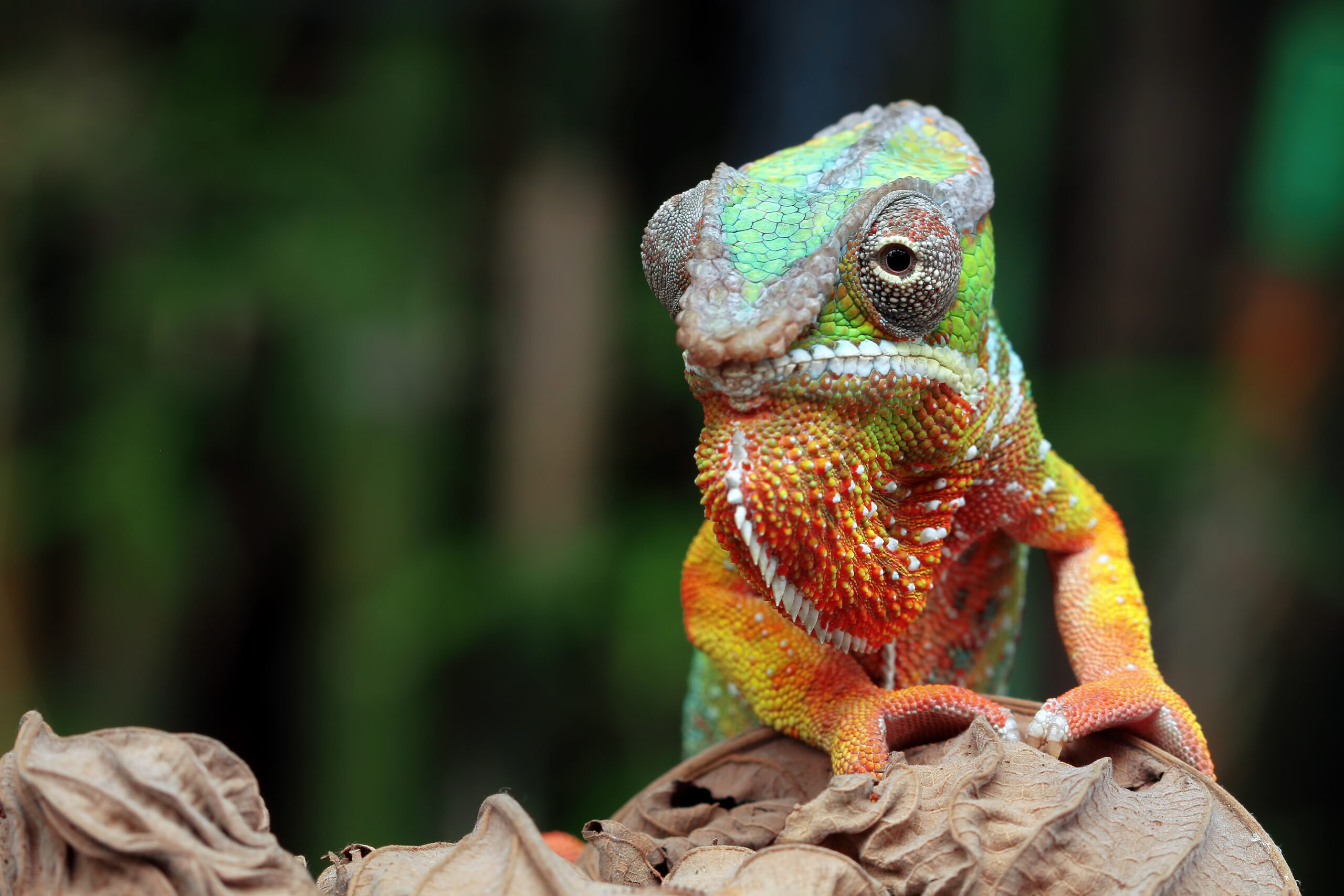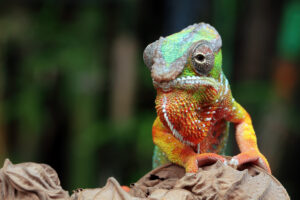The Fascinating World of Exotic Pets: Unconventional Companions for the Adventurous Pet Lover

When you think of pets, images of playful dogs, cuddly cats, and chirping birds often come to mind. But for some pet enthusiasts, the thrill of owning a traditional pet isn’t enough. Instead, they seek out more exotic companions that not only stand out in terms of appearance but also offer unique and intriguing experiences. From reptiles and amphibians to small mammals and even insects, exotic pets have gained popularity among those looking for something a bit more unconventional.
But before you rush to acquire a fascinating creature, there are essential considerations to keep in mind. In this article, we’ll explore the world of exotic pets, focusing on the different types, the responsibilities that come with owning one, and the factors that make these pets truly captivating.
What Makes a Pet “Exotic”?
The term “exotic pet” is used to describe any pet that is not a typical household animal, such as a dog, cat, rabbit, or guinea pig. Exotic pets can range from small creatures like sugar gliders and hedgehogs to larger animals like snakes and lizards. They often come from wild or tropical environments and have very specific care requirements.
Exotic pets are often appealing because they provide owners with the opportunity to bond with creatures that are unusual, beautiful, or mysterious. These pets require specialized care, attention, and knowledge, which can make them even more rewarding to keep.
Here are just a few examples of popular exotic pets:
- Reptiles: Snakes, lizards, and turtles are some of the most popular exotic pets. Reptiles have fascinating characteristics, such as the ability to regenerate tails (in some species) and their unique skin textures.
- Amphibians: Frogs, salamanders, and newts are amphibians that have long been popular for their mesmerizing colors and fascinating behavior.
- Exotic Mammals: Animals like sugar gliders, hedgehogs, and fennec foxes fit into this category. Their adorable faces and quirky habits make them attractive to those looking for something out of the ordinary.
- Insects and Arachnids: Tarantulas, scorpions, and praying mantises are examples of exotic creatures that intrigue many collectors and pet owners.
- Birds: While not exactly a new trend, certain species of exotic birds, like parrots, cockatoos, and macaws, can make unique and beautiful pets, with their striking plumage and highly intelligent personalities.
The Appeal of Exotic Pets
The allure of exotic pets lies in their fascinating behaviors, unique appearances, and the challenge of providing care for creatures that differ greatly from typical house pets. Below are some reasons why exotic pets are captivating:
1. Unusual Beauty and Diversity
Exotic pets come in a variety of shapes, sizes, and colors that are sure to captivate any animal lover. Whether it’s the striking patterns on a snake’s scales or the iridescent feathers of a tropical bird, exotic pets stand out visually. Some species even possess unusual features, such as the gliding ability of a sugar glider or the long, elegant tails of certain reptiles.
The diversity in exotic pets makes it possible for pet owners to find an animal that aligns with their personal preferences and aesthetic taste. The unique beauty of these creatures often serves as a source of admiration for visitors and makes them a conversation starter.
2. Fascinating Behavior
Exotic pets often display behavior that is unlike anything you’d see in traditional pets. For instance, chameleons can change color based on their environment or mood, making them an endlessly fascinating creature to observe. Birds like parrots can mimic human speech, while octopuses display remarkable intelligence and problem-solving skills. Many reptiles, such as bearded dragons and geckos, show endearing behaviors that you won’t find in your standard dog or cat.
For pet owners who enjoy learning about animal behavior and creating a dynamic, interactive pet experience, exotic pets can offer endless opportunities for discovery.
3. Low Maintenance (In Some Cases)
While some exotic pets require intricate care, many are surprisingly low-maintenance compared to traditional pets. For instance, reptiles like turtles and snakes are often much less demanding than dogs or cats. They don’t need to be walked or groomed, and their feeding schedules can be less frequent. Certain species of birds or amphibians also don’t require as much interaction as a dog might, making them ideal for busy individuals or those living in small spaces.
In fact, many exotic pets thrive on minimal human interaction, which can be a refreshing change for people who want to enjoy the companionship of a pet without the constant attention that more traditional pets demand.
The Challenges of Owning an Exotic Pet
Though exotic pets come with their perks, they also require careful thought and planning. These pets often have specialized care needs, and failing to meet them can result in health problems or even the death of the animal. Here are some of the challenges of owning an exotic pet:
1. Specialized Care and Environment
Exotic pets often come from tropical or wild habitats, meaning their care requirements may be quite different from those of domestic pets. For example, reptiles like iguanas require specific temperatures and humidity levels to stay healthy, while amphibians like frogs need a very particular water environment to thrive. If you’re not prepared to set up an appropriate habitat and meet these requirements, your pet may struggle.
Many exotic pets also require a specialized diet. Some reptiles are carnivorous, while others are herbivores. Insects may require special food, such as a diet of live ants or worms. Researching your pet’s specific needs and ensuring that you have the resources to provide them is crucial.
2. Legal and Ethical Concerns
Some exotic pets may be illegal to own in certain regions due to concerns over invasive species or the potential danger to public safety. Before acquiring an exotic pet, it’s essential to check your local laws and regulations to ensure that the animal is legal to keep.
Additionally, ethical considerations come into play when acquiring exotic pets. In many cases, these animals are taken from their natural habitats or bred in captivity under questionable conditions. Potential pet owners should seek to obtain animals from responsible breeders or organizations that prioritize animal welfare and conservation efforts.
3. Long-Term Commitment
Exotic pets can live long lives, sometimes much longer than traditional pets. Turtles, for example, can live for decades, and some species of birds, like macaws, can live up to 80 years. When adopting an exotic pet, it’s important to understand that you’re making a long-term commitment to the animal’s well-being and that you will need to provide care for many years to come.
Conclusion: A New Kind of Pet Owner
Exotic pets offer a unique opportunity for animal lovers who are seeking an unconventional companion. Whether you’re drawn to the fascinating behavior of an octopus, the beautiful plumage of a tropical bird, or the mystery of a snake’s movements, these creatures offer experiences that traditional pets simply cannot match.
However, owning an exotic pet comes with the responsibility of learning about their care requirements and ensuring that they thrive in your home. While these pets can be incredibly rewarding, they also demand a commitment to understanding their specialized needs, ensuring they have the proper living environment, and treating them with the respect they deserve.
If you’re ready for the challenge and the adventure of caring for a creature that’s a bit out of the ordinary, the world of exotic pets is sure to offer plenty of wonder and excitement. Just remember to do your research, be prepared for the long haul, and enjoy the one-of-a-kind bond you’ll share with your unique, exotic companion.





